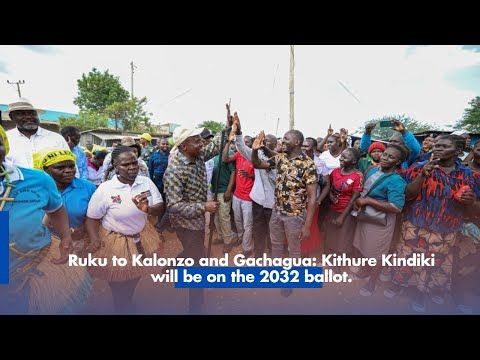
President William Ruto has announced an ambitious nationwide infrastructure programme that will see the government dual 2,500 kilometres of road and tarmac an additional 28,000 kilometres over the next ten years.
The initiative, he said, is part of a broader effort to scale up Kenya’s transport and logistics capacity and support economic growth.
Speaking during his State of the Nation Address in Parliament, Ruto said the plan will ease mobility, unclog major transport corridors and enhance regional trade.
The government will also rely on Public–Private Partnerships (PPPs) to accelerate aviation infrastructure upgrades, including the modernisation of Jomo Kenyatta International Airport (JKIA), Mombasa Airport and Lamu Airport.
The arrangement is also expected to support Kenya Airways, which continues to face operational challenges.
“This work is already in progress. Next week, I will launch the dualing of the 170-kilometre Rironi–Naivasha–Nakuru–Mau Summit Road,” the President said.
“On the same day, I will break ground for the dualing of the 57-kilometre Rironi–Mai Mahiu–Naivasha Road.”
He noted that the persistent gridlocks that paralyse traffic on the corridor — especially during weekends and holidays — will soon be a thing of the past.
The Nairobi–Nakuru highway is one of the country’s busiest and most economically significant routes, handling massive volumes of cargo and passenger movement.
Other major roads earmarked for dualing include Muthaiga–Kiambu–Ndumberi Road, Machakos Junction–Mariakani Road, Mau Summit–Kericho–Kisumu Road, Kisumu–Busia Road, Mau Summit–Eldoret–Malaba Road, Athi River–Namanga Road, Karatina–Nanyuki–Isiolo Road, Makutano–Embu–Meru–Maaua Road, Mtwapa–Malindi–Mombasa–Lunga Lunga Road, Kericho–Kisii–Isebania Road, Nakuru–Nyahururu–Karatina Road, and Kisii–Oyugis–Ahero Road.
Ruto also revealed that the government will extend the Standard Gauge Railway (SGR) from Naivasha to Kisumu and eventually to Malaba, with the process set to begin in January 2026.
The extension is expected to strengthen Kenya’s role in regional logistics and boost trade with Uganda, Rwanda, South Sudan and the Democratic Republic of Congo.
Among the major road projects highlighted, the Rironi–Mau Summit expansion stands out as one of the most anticipated infrastructure undertakings.
The corridor forms a critical section of the Northern Corridor, linking the Port of Mombasa to western Kenya and several landlocked East African countries.
Over the years, rapid population growth, increased vehicle ownership and heavy commercial traffic have pushed the highway beyond capacity, resulting in frequent congestion and rising safety concerns.
The planned expansion will convert the current road into a wider dual-carriageway designed to handle increased traffic volumes more efficiently. It includes upgrading the Rironi–Mai Mahiu interchange, expanding crucial sections to accommodate more lanes, and improving junctions and interchanges to eliminate bottlenecks.
The project will also integrate modern safety enhancements such as pedestrian crossings, service lanes and structured entry and exit points.
Once completed, the upgraded corridor is expected to significantly cut travel time between Nairobi, Naivasha and Nakuru, lowering the cost of transportation for both passengers and freight.
The improved road network will also unlock new economic opportunities along the route, enhancing tourism, supporting manufacturing and boosting agricultural trade. Business hubs in Naivasha and Nakuru are projected to benefit particularly from improved access and reduced logistics costs.














